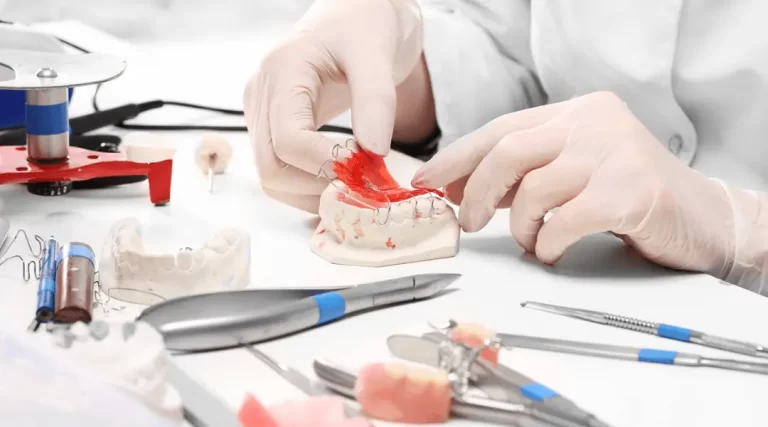Introduction to Bonding Adhesives
Bonding adhesives play a crucial role in joining various materials together securely. Whether you’re a DIY enthusiast or working in an industrial setting, understanding bonding adhesives is essential for successful projects. These versatile substances offer strong and durable bonds, making them indispensable in various applications.
Let’s dive into this peculiar topic and uncover the taste, health risks, and even unique uses of glue beyond its intended purpose.
In this article, we will explore the world of bonding adhesives, delving into their types, pros, cons, how to use them effectively, and essential tips and tricks to master the art of bonding.
Types of Bonding Adhesives
- Cyanoacrylate Adhesives (Super Glue):
- These fast-acting adhesives are perfect for bonding small items like ceramics, glass, and plastic.
- They form strong bonds quickly, but they are not ideal for load-bearing applications due to their brittleness.
- Epoxy Adhesives:
- Epoxy adhesives are versatile and offer excellent bonding for various materials, including metal, wood, and plastics.
- They provide high strength and are commonly used in construction, automotive, and aerospace industries.
- Polyurethane Adhesives:
- These adhesives are known for their flexibility and resistance to environmental factors.
- They are suitable for both porous and non-porous materials and are commonly used in woodworking and automotive applications.
- Acrylic Adhesives:
- Acrylic adhesives provide exceptional bonding for transparent materials like glass and plastics.
- They offer good resistance to heat, weather, and chemicals.
- Silicone Adhesives:
- Silicone adhesives are highly flexible and resistant to extreme temperatures, making them suitable for sealing and bonding in various industries.
Pros of Using Bonding Adhesives
Bonding adhesives offer numerous advantages that make them a preferred choice for many projects:
- Strong and Durable Bonds: These adhesives create robust bonds that can withstand considerable stress and strain.
- Versatility and Applications: Bonding adhesives can be used on a wide range of materials, from metals to plastics, ceramics, and more.
- Quick Bonding Process: Many adhesives offer rapid curing times, allowing for faster completion of projects.
- Resistance to Environmental Factors: Certain adhesives are designed to resist moisture, heat, chemicals, and UV exposure, ensuring long-lasting bonds.
Cons of Using Bonding Adhesives
While bonding adhesives have numerous benefits, it’s essential to consider their limitations as well:
- Limited Gap Filling Capability: Adhesives may not effectively fill large gaps between materials, requiring precise fitting.
- Curing Time and Handling Restrictions: Some adhesives require sufficient curing time before they reach their full strength. Handling the bonded items prematurely may lead to weaker bonds.
- Potential Health and Safety Concerns: Certain adhesives emit fumes or may cause skin irritation, necessitating proper ventilation and protective gear during use.
- Difficulty in Disassembling Bonded Items: Unlike mechanical fasteners, disassembling bonded items can be challenging and may cause damage.
Understanding How to Use Bonding Adhesives
To achieve optimal results with bonding adhesives, proper usage is crucial. Follow these essential steps:
Surface Preparation
Before applying the adhesive, ensure the surfaces are clean, dry, and free from dust and grease. Proper surface preparation enhances bonding strength.
Correct Application Techniques
Different adhesives have unique application methods. Follow the manufacturer’s instructions to apply the adhesive evenly and avoid excessive amounts.
Handling and Storage
Store adhesives in cool, dry places, away from direct sunlight, and follow recommended temperature ranges for application and storage.
Tips and Tricks for Effective Bonding
- Choosing the Right Adhesive for the Material:
- Always match the adhesive to the material you’re bonding to ensure maximum adhesion and longevity.
- Enhancing Bonding Strength:
- Roughening smooth surfaces slightly can improve bonding strength.
- Avoiding Common Mistakes:
- Clean up excess adhesive promptly to avoid messy results.
- Bonding in Challenging Conditions:
- Use adhesives specifically designed for extreme temperatures or harsh environments.
Bonding Adhesives for Specific Materials
Bonding Wood
- Epoxy adhesives are excellent for wood bonding, offering a strong and durable connection.
Bonding Metal
- Cyanoacrylate adhesives provide fast and reliable bonding for metal surfaces.
Bonding Plastics
- Acrylic adhesives are ideal for transparent plastics, while polyurethane adhesives are versatile for different plastic types.
Bonding Glass
- Silicone adhesives are the go-to option for bonding glass due to their flexibility and transparency.
Bonding Ceramics
- Epoxy adhesives and cyanoacrylate adhesives are commonly used for bonding ceramics.
Bonding Adhesives in DIY Projects
Using bonding adhesives in DIY projects opens up a world of possibilities. Here are some popular applications:
- Creating Art and Crafts: Bonding adhesives allow you to piece together various materials to create stunning artwork.
- Repairing Household Items: From fixing broken ceramics to reattaching loose tiles, bonding adhesives are handy for quick repairs.
- Building Furniture: DIY furniture projects often require strong bonding adhesives to ensure stability and longevity.
Industrial and Commercial Applications
Bonding adhesives are extensively used in various industries for their exceptional properties:
- Structural Bonding in Construction: Epoxy adhesives are widely used in the construction of buildings, bridges, and other structures.
- Automotive Bonding Applications: Adhesives play a crucial role in assembling automotive components, reducing weight, and improving fuel efficiency.
- Electronics and Electrical Bonding: Adhesives are essential for securing electronic components and providing insulation.
Environmental Impact of Bonding Adhesives
In recent years, eco-friendly adhesives have gained popularity due to their reduced environmental impact:
- Eco-friendly Adhesives: Manufacturers are developing adhesives with lower VOC emissions and reduced environmental impact.
- Sustainable Bonding Practices: Proper waste management and recycling of adhesive containers contribute to sustainable bonding practices.
Choosing the Right Bonding Adhesive
To ensure successful bonding, consider these factors:
- Considering Material Compatibility: Select an adhesive compatible with the materials you intend to bond.
- Temperature and Environmental Factors: Ensure the adhesive can withstand the temperature and conditions of the application.
- Load-Bearing Requirements: Assess the strength needed for the bonded assembly to choose an appropriate adhesive.
Troubleshooting and Common Issues
Even with proper usage, adhesive bonding may encounter some challenges:
- Poor Adhesion: Check for surface contamination or improper adhesive selection.
- Adhesive Failure: Verify if the adhesive is past its shelf life or if it was not applied correctly.
- Storage and Shelf Life Concerns: Adhesives have a limited shelf life, so ensure you’re using fresh products for the best results.
Safety Measures and Precautions
When working with bonding adhesives, safety is paramount:
- Handling Chemical Adhesives Safely: Follow safety guidelines provided by the manufacturer.
- Personal Protective Equipment (PPE): Wear appropriate PPE, including gloves and safety glasses, when handling adhesives.
Cleaning and Removing Bonding Adhesives
Cleaning and removing excess adhesive can be challenging, but these tips can help:
- Removing Excess Adhesive: Use appropriate solvents or mechanical methods to clean off excess adhesive.
- Disassembling Bonded Items: If necessary, apply heat or specialized debonding agents to disassemble bonded items carefully.
Conclusion
Bonding adhesives are powerful tools that enable us to create, repair, and build with ease. From DIY projects to industrial applications, these versatile adhesives offer exceptional bonding strength and reliability. By understanding the different types of adhesives and mastering their usage, you can achieve outstanding results in your projects. Remember to follow safety guidelines, select the right adhesive for the job, and properly prepare the surfaces for the best outcomes.



